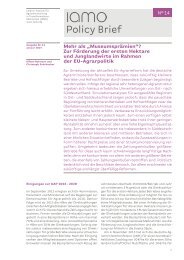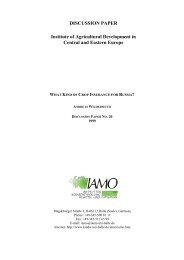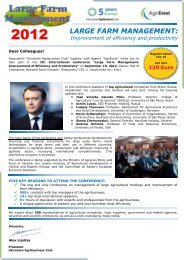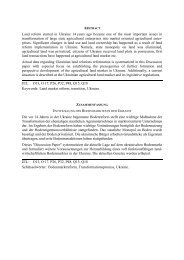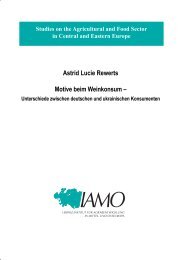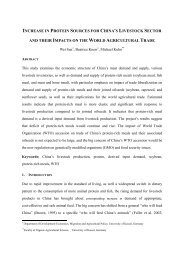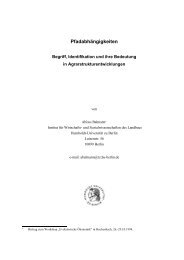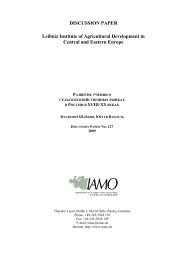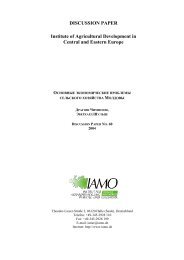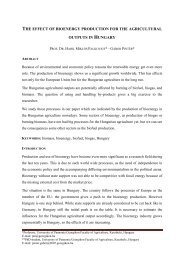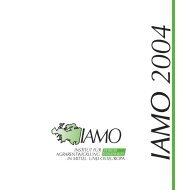downloaded
downloaded
downloaded
You also want an ePaper? Increase the reach of your titles
YUMPU automatically turns print PDFs into web optimized ePapers that Google loves.
II<br />
Executive summary<br />
in Slovenia provided valuable lessons with regard to negotiating the Agricultural<br />
Chapter with the European Commission (EC). In the following, the main findings<br />
for accelerating both, rural and agricultural sector development, and smoothing<br />
the negotiation of the agricultural chapter are summarised:<br />
Small-scale family farms. A considerable number of farms are quite small, with<br />
three hectares or less. Few family farms exceed ten hectares.<br />
Dairy farms. Dairy production plays an important role in Croatia's agricultural<br />
sector; with roughly 25% of total revenue, it is the largest sub-sector. Further,<br />
95% of dairy cows are kept in family farms, with an average of about three<br />
heads per farm. The DRC analysis was based on a small sample of farms which<br />
were divided into two groups: those with less than 16 cows (four on average),<br />
and those with 16 or more (an average of 47).The DRC value for the former was<br />
3.0, and the latter was 2.2. These high figures indicate that all dairy farmers must<br />
greatly improve their efficiency. Compared to Slovenian dairy farmers, Croatian<br />
milk producer use feed, especially feed concentrates, in an inefficient way. Improvements<br />
can especially be made by investing in better breeds and cowsheds. Also,<br />
investments will be needed for reaching EU hygiene standards in the coming<br />
years. This will put an additional burden on dairy farms for staying in business.<br />
Food processing chain. Analysing revealed comparative export advantage<br />
indicators of agro-food commodities showed that the processing industry is<br />
rather efficient; the deeper the level of processing the more competitive Croatia’s<br />
food sector becomes on EU markets. This observation is made for trade in agrofood<br />
in general as well as in dairy products.<br />
Types of farms. Seventy-five per cent of all farms surveyed are part-time farms.<br />
Based on the share of receipts from non-farm activities, we grouped the parttime<br />
farms into those with 10-50% (called "complementing") and those with<br />
more than 50% (called "subsidiary"). Twelve per cent of the farms in the sample<br />
are complementing farms and 63% are subsidiary farms. Overall, non-farm<br />
income accounts for over a third of the total income over all types of farms.<br />
Professional training, education & farm-related topical information.<br />
Successful farm and non-farm businesses require improved access to appropriate<br />
professional training, education and topical information. Compared to Slovenia,<br />
professional training in agriculture does not play a big role in rural Croatia. The<br />
average level of educational attainment is not fully satisfactory, with only 36%<br />
of farm family members having attended primary school and 46% having had<br />
secondary school education.



